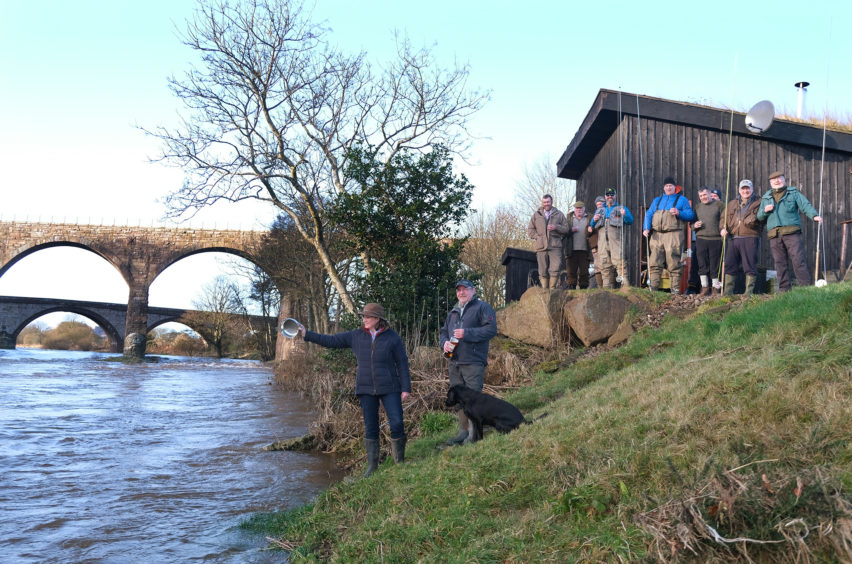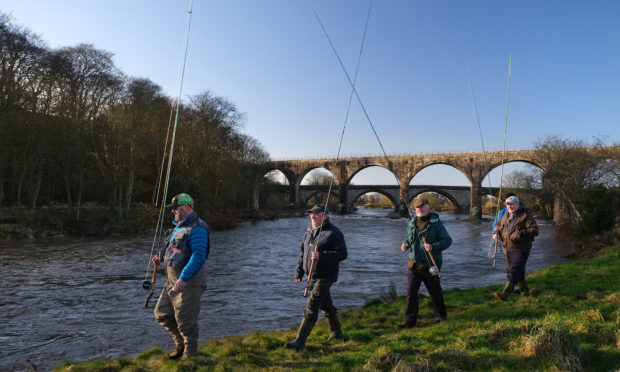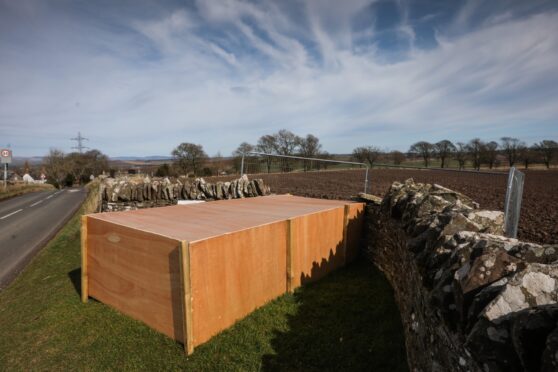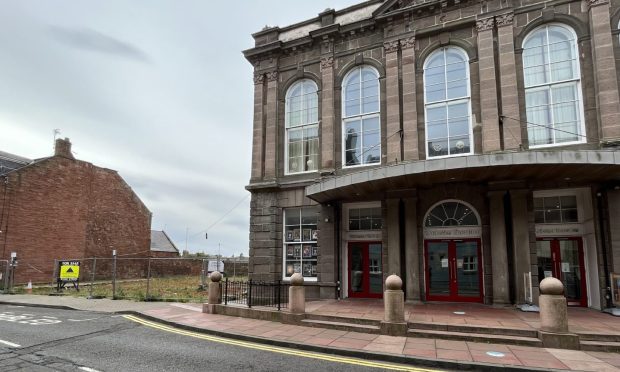Rising water levels from the remnants of Storm Dennis were matched by opening day optimism that an Angus river can continue to play its part in the recovery of Scotland’s wild salmon.
In the wake of a Scottish Government summit to consider the plight of a species “in crisis”, beat owners and fisheries chiefs on the North Esk are pinning their hopes on a continuing turnaround in the fortunes of the sporting water.
It follows a remarkable 2019, when the buy-out of the last netting station at the river mouth north of Montrose helped boost fish numbers by 20% and rod catches by almost a third.

“There is a real buzz on the river this year, with ghillies and anglers optimistic for a cracking season,” said Dr Craig MacIntyre of the Esk Rivers and Fisheries Trust at the Kinnaber ceremony marking the start of the new season.
“There has been a lot of doom and gloom about falling numbers of Atlantic salmon and poor fishing opportunities, however here on the River North Esk we seem to be bucking the trends.
“In 2018, the Esk District Salmon Fishery Board bought out the salmon netting station at the mouth of the river, which meant that 2019 was the first season in living memory when no salmon nets – coastal or in the river – were operating.
“While some of the improved catch was down to better river conditions in 2019, the lack of salmon nets had a huge impact.
“The run of fish over the counter in July last year was the second highest recorded for that month since the counter was installed in 1981.”
“Mile for mile, the North Esk is probably the most productive river for salmon in Scotland, and there are fantastic fishing opportunities throughout the entire river.”
The trust has said it is also seeing the benefit of a smolt shepherding scheme which was put in place several years ago to protect the young salmon as they leave the river and begin their migration to the ocean feeding grounds.
Beat manager, Mary Stansfeld said: “My husband’s family has fished the North Esk for nearly 90 years, and it has never been in better condition.
“There is so much positivity on the river just now, with catches of salmon and sea trout improving now that the salmon netting stations are closed. We feel incredibility optimistic for the future, and are looking forward to a wonderful season on the Northie.”
Scottish Government backs strategy for species in crisis
According to the North Atlantic Salmon Conservation Organisation (NASCO), wild Atlantic salmon numbers in the oceans fell by more than half in the three decades between 1983 and 2016.
The species has been categorised as “in crisis” by NASCO and last month, a round-table discussion was convened at the Scottish Parliament in an attempt to address the issue.
The Scottish Government has committed to a wild salmon strategy by September this year in their programme for government.
Primary reasons for the decline include increased mortality at sea due to climate change, by-catch in marine fisheries and predation from other fish, birds, seals and dolphins.
Dr MacIntyre said: “These factors are largely outwith the control of wild salmon fishery interests in Scotland.
“However there are factors affecting freshwater interests over which we do have control, such as water quality, impact from farming, pressure from predators and the quality of the river habitat for fish.”
A £750,000 project to track smolt migration on Scotland’s west coast is to be part of the drive to try and reverse the trend of record lows.
Scottish environment secretary Roseanna Cunningham said the government would continue to work with bodies including district boards and trusts, the Atlantic Salmon Trust and Fisheries Management Scotland to help safeguard the species’ future.









